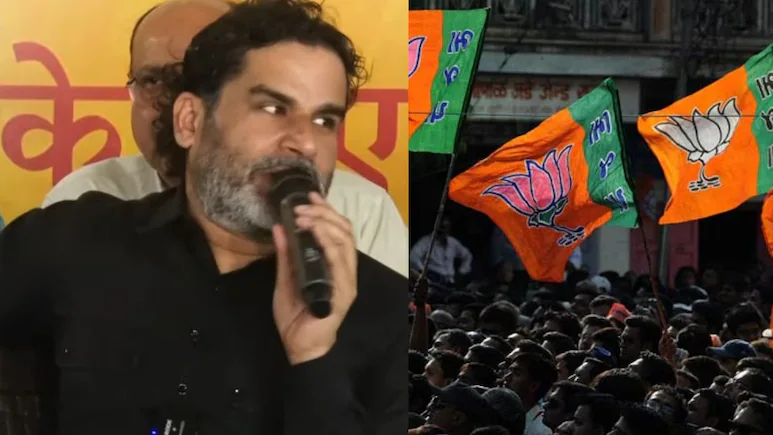The 2025 Bihar Assembly elections were set to be a fierce contest, but few anticipated the chaos that would erupt on polling day itself. In a move that caught even seasoned political observers by surprise, four Jan Suraaj Party candidates quit the party one joining the BJP and three withdrawing their candidacies entirely. The high-voltage drama, exploding on social media and news channels within hours, has already recast pre-poll calculations and ignited debate over credibility, strategy, and the future of Bihar’s newest political hopefuls.
Let’s break down the details behind these high-profile defections, examine their possible motives and impact, and consider what this means for the state’s evolving political landscape in 2025.
The Breaking News: Four Walk Out, One Switches Sides
According to real-time reports from Republic TV and social channels, the drama unfolded as follows:
On the very day of polling, four candidates from the Jan Suraaj Party the brainchild of reformist leader Prashant Kishor publicly separated from the party. Notably, Sanjay Kumar Singh, the party’s prominent candidate from Munger, announced his switch to the Bharatiya Janata Party (BJP). The remaining three chose to withdraw from the electoral race altogether.
What makes the development more stunning isn’t just the timing (polling day shocks are rare even by Bihar standards) but also the signal it sends about the internal stability of new political entrants in a state notorious for churn and coalition intrigue.
Why Did the Candidates Quit? Reading Between the Lines
While official statements have been sparse, sources and local analysts point to several likely factors:
- Unhappiness with Ticket Distribution: Jan Suraaj, positioning itself as an alternative to “old politics,” faced rifts over whom to field in key constituencies. Disgruntled ground workers and hopefuls may have felt side-lined in “winnable” seats.
- Strategic Pressure and Political Poaching: Polling day is prime time for rival parties to lure fence-sitters, especially in swing constituencies. BJP’s quick embrace of Sanjay Kumar Singh suggests ongoing “operation lotus” tactics to damage newcomers and consolidate their own prospects.
- Lack of Local Machinery: Unlike established parties, Jan Suraaj’s grassroots presence and electoral machinery may have faltered last-minute, leading some candidates to feel they have better prospects elsewhere or in bowing out.
- Political Inexperience: Candidates drawn from civil society and activism sometimes underestimate the ground realities and resilience of the state’s legacy parties.
The Immediate Fallout: Impact on the Election
1. Jan Suraaj’s Image at Stake
Prashant Kishor’s platform was built on transparency, youth, and freedom from “politics as usual.” Rapid exits on polling day could erode confidence among voters as well as future recruits about the party’s ability to deliver on its promise of organizational strength and discipline.
2. Boost for BJP
By gaining Sanjay Kumar Singh and exposing cracks in opposition ranks, the BJP scores not just an extra seat but a perception win. The defection will likely be amplified in rallies and campaign messaging, painting BJP as the “united” choice versus the “unstable” new entrants.
3. Confused Voters and Local Dynamics
In affected constituencies, many voters may only discover the candidate switch while standing in line at polling booths. This could lead to a drop in Jan Suraaj’s vote share, unintentional spoiling of the opposition vote, and, potentially, unexpected BJP gains.
Reactions from Parties, Leaders, and Citizens
- Jan Suraaj leaders called emergency press conferences, blaming “dirty tricks” and illegal inducements by established rivals. Still, questions are being raised about their vetting process and candidate loyalty.
- BJP and NDA allies were quick to celebrate, casting the BJP as the “natural home” for change-driven leaders. Their narrative is about “open doors for all who want to deliver good governance.”
- Voters and civil society expressed a mixture of disappointment and cynicism. Many believe this reflects old patterns of opportunism and the ongoing challenge of bringing real change to Bihar’s caste-and-cash driven electoral culture.
Lessons for 2025 and Beyond
For New Parties
Building a movement is not enough organizational rigor, robust vetting of candidates, and the building of local “war rooms” matter just as much as ambition and idealism.
For State Politics
Defections, especially on the eve of voting, are both a cause and a symptom of weak party discipline and a hyper-competitive political marketplace. This pattern undermines public trust and distracts from real issues like employment, healthcare, and infrastructure.
For Democratic Process
Voters deserve clarity, consistency, and candidates who stay true to their mandate. While realignments have always been part of Bihar elections, the volatility of new faces means democracy’s promise for genuine alternatives remains a work in progress.
Conclusion: A Reality Check for Bihar’s Politics
The Bihar Assembly election 2025 defections highlight both the volatility of Indian state politics and the extra hurdles facing new challengers in entrenched systems. As the dust settles and votes are counted, parties like Jan Suraaj will need to build stronger systems for loyalty and preparedness, and voters will reflect on what real change actually looks like. The lessons for Bihar and perhaps for all evolving democracies are clear: credibility, organizational culture, and the ability to withstand the storm matter more than the excitement of a lone crusader or the noise of last-minute headlines.


